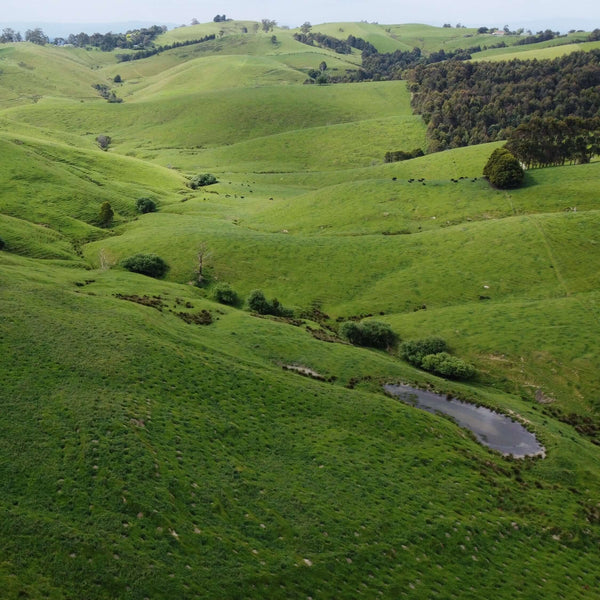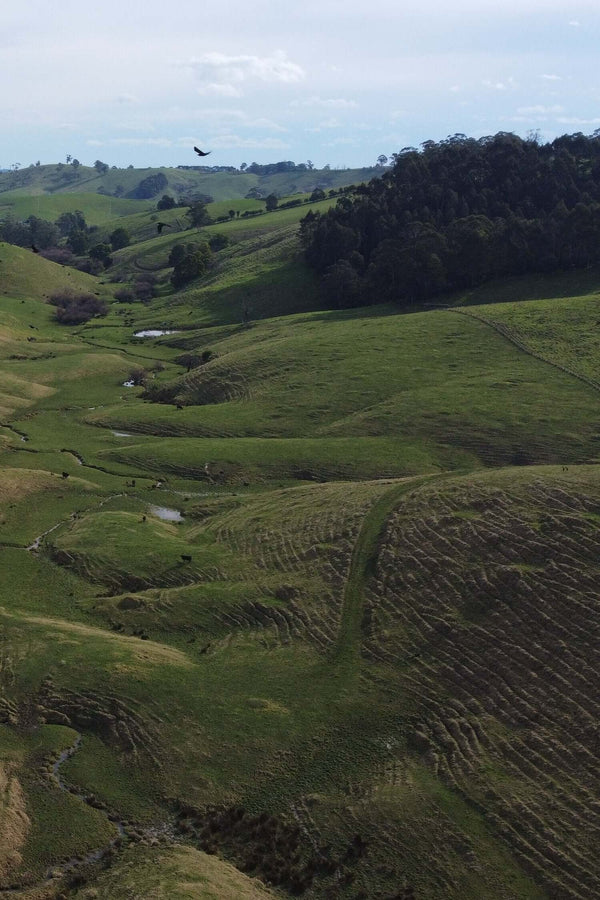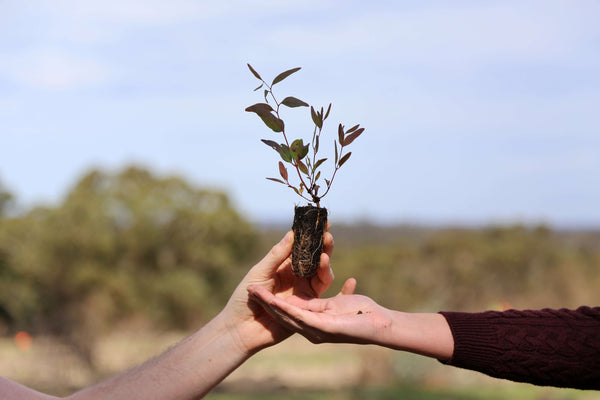Located on Boonwurrung Country in South Gippsland, this site sits within a rich carbon sequestering area of Victoria and is building on Greenfleet’s impact in the region.
Not far from our Strzelecki Nature Link and Glendalough projects, Mountain View will provide additional environmental benefits as it draws down carbon from the atmosphere, reduces soil erosion, improves water quality, and extends habitat for local wildlife.

Location & Map
Mountain View is a short drive from Korumburra in South Gippsland, a region known for its steep slopes and high rainfall. On its northern boundary sits the Mt View Creek.
Mount Worth State Park sits to the east of this project, where there is a remnant Western Strzelecki Ranges Forest. By restoring Mountain View we are extending the biodiversity of this region and growing a habitat corridor for native wildlife. Greenfleet has a number of revegetation projects underway in South Gippsland, which are also restoring critical habitat for the local koalas. You can see where many of Greenfleet’s projects are growing here.

Revegetation Approach & Species Selection
Mountain View is located near Greenfleet’s Strzelecki Nature Link project, where we are creating a 3.5 kilometre contiguous habitat corridor for koalas and other native wildlife.
When Greenfleet purchased the property at Mountain View, it had been heavily cleared for farming, with only blackwood (Acacia melanoxylon) still present on site. Mt View Creek, which runs across the top of the property, experiences flash flooding that can impact the whole site. By planting additional blackwood trees, we are helping to regulate the water flow, reduce soil erosion, and improve water quality.
We have also restored the critically endangered Strzelecki gum (Eucalyptus strzeleckii), which is endemic to this unique area. Other eucalypts planted include manna gum (Eucalyptus viminalis) and blue gum (Eucalyptus globulus) which will form the forest canopy.
In total, 23 locally native species have been planted to restore the ecosystems that existed before the land was cleared.

Wildlife Habitat Restoration
As it grows, the forest at Mountain View will provide potential habitat for a number of local wildlife species.
We’ve planted several flowering trees, including acacias and hazel pomaderris (Pomaderris aspera) which thrive in moist areas and are known to attract pollinators such as native birds, bees, and other insects. With proximity to Mount Worth State Park, this forest will extend habitat for the local birdlife populations, including crimson rosellas, king parrots, olive whistlers, grey butcherbirds, and tawny frogmouths.
A pair of wedge-tailed eagles (pictured) have been seen flying across the property, and we have planted seven species of eucalypts which will provide tall eagle habitat as they grow. The State Park is also home to iconic Australian animals such as the common wombat and swamp wallaby, both of which have already been sighted at Mountain View.
A lesser-known species found in this region is the endangered giant gippsland earthworm. In fact, Sir David Attenborough has visited the region and declared it the “rarest and most extraordinary of all earthworms”!
These fascinating creatures can grow up to 150 centimetres in length and live beneath the soil. The presence of these worms can influence Greenfleet’s revegetation approach as we need to be careful not to disrupt their habitat. The forest at Mountain View is a potential location for the giant gippsland earthworm and we hope in time they will benefit from the restoration work we are doing in the region.

Climate Action
The forest growing at Mountain View is legally protected for 100 years. Over that time, it will remove over 28,000 tonnes of carbon from the atmosphere, which is the equivalent of what almost 6,680 average vehicles emit on Australia’s roads in a single year.
This property’s on title legal protection ensures that the forest cannot be cut down, even if the ownership of the property changes hands. This protection ensures that Mountain View can sequester large amounts of carbon and deliver long-term, environmental benefits across its lifetime.
Greenfleet uses the Full Carbon Account Model (FullCAM) to measure the carbon uptake at our revegetation sites. This model was developed by the CSIRO and is approved by the Department of Climate Change, Energy, the Environment and Water.
Location Size
11 hectares near Korumburra Victoria
Planting Dates
2024, 2025
Species
- Silver wattle (Acacia dealbata)
- Blackwood (Acacia melanoxylon)
- Prickly moses (Acacia verticillata ssp. verticillata)
- Dogwood (Cassinia aculeata)
- Three-veined cassinia (Cassinia trinerva)
- Mountain grey gum (Eucalyptus cypellocarpa)
- Blue gum (Eucalyptus globulus)
- Eurabbie blue gum (Eucalyptus globulus ssp. bicostata)
- Messmate (Eucalyptus obliqua)
- Mountain ash (Eucalyptus regnans)
- Strzelecki gum (Eucalyptus strzeleckii)
- Manna gum (Eucalyptus viminalis)
- Hop goodenia (Goodenia ovata)
- Burgan (Kunzea leptospermoides)
- Prickly tea-tree (Leptospermum continentale)
- Woolly tea-tree (Leptospermum lanigerium)
- Swamp paperbark (Melaleuca ericafolia)
- Snowy daisy bush (Olearia lirata)
- Tree everlasting (Ozothamnus ferrigineous)
- Hazel pomaderris (Pomaderris aspera)
- Christmas bush (Prostanthera lasiathos)
- Kangaroo apple (Solanum avilculare)


